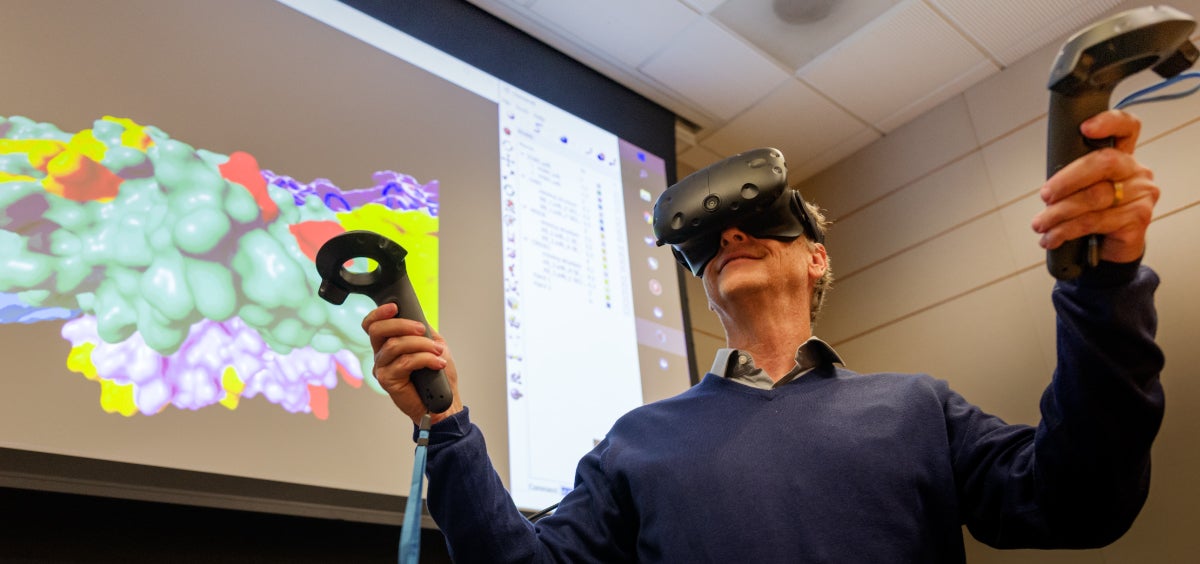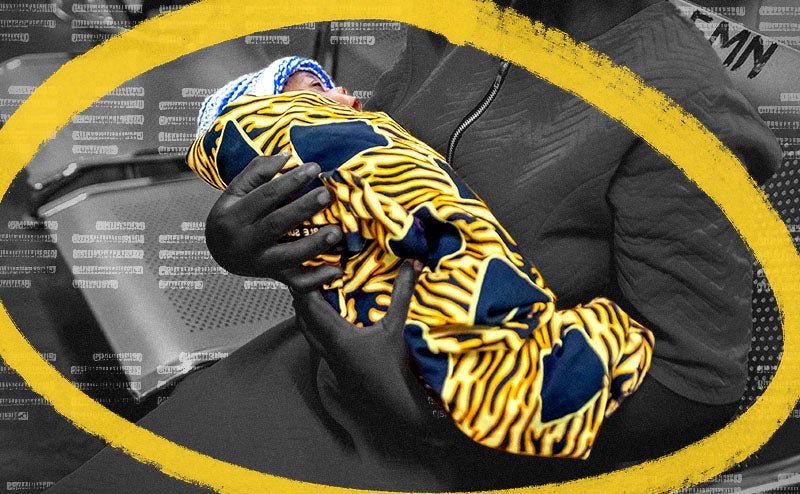We need to make the planet a better place to live, which means ensuring that everyone has an equal chance to survive and thrive no matter where they’re born.
Last month, in a government building in Maryland, I put on virtual reality headset and got a glimpse of the future of medicine.
I was touring the Vaccine Research Center, located on the campus of the National Institutes of Health (NIH), the federal agency that runs public medical research in the United States. Our foundation has been working with the NIH for years—it’s one of the most important research relationship we have—and we get together occasionally to check in on our progress. After a morning of meetings, I got to visit the vaccine center with the institute’s director, Francis Collins, and his colleague Tony Fauci.
Our tour included a very cool demonstration of how researchers are using VR to examine viruses for weak spots that they could target in making a vaccine or drug. This state-of-the-art approach could lead to a universal flu vaccine—as opposed to today’s seasonal variety—and hopefully one day to an HIV vaccine. (I’m investing in a private company that’s doing similar work.)
Take a look:
That virtual reality model is just one example of the NIH’s mind-blowing work. In the United States, the NIH has played a key role in everything from lowering the death rates from heart disease and stroke to a dramatic decline in tooth decay. Today, alongside the Centers for Disease Control and Prevention, it’s helping us prepare for the next epidemic, which could kill tens of millions of people if we’re not ready for it.
Here are some of the other diseases the NIH is working on:
- HIV/AIDS. NIH researchers were instrumental in developing anti-retroviral drugs, which have saved the lives of 17 million people with HIV. Now, as I saw on my visit to the VRC, they are leading the world in the effort to develop an HIV vaccine.
- Cancer. NIH research has led to new ways to treat cancer by shoring up the body’s ability to fight the disease, including approaches that keep tumors from avoiding the immune system’s defenses. And it was a major player in the creation of vaccines that prevent HPV, a virus that can cause cervical cancer.
- Ebola: During the Ebola outbreak of 2014–16, scientists from the NIH and other agencies worked with the private sector on successful clinical trials of potential Ebola vaccines. More recent studies have shown that their vaccines are safe and able to produce an immune response.
- Zika: The VRC is developing several vaccines for this mosquito-borne virus, which recently infected more than 1 million people in Brazil and is suspected of causing babies to be born with a small head and brain. The vaccine is based on effective vaccines for the West Nile virus, which is related to Zika.
- Malaria: It kills more than 700,000 people a year. While there’s been some progress on a malaria vaccine, we don’t yet have one that blocks transmission of the disease over a long period. The NIH is one of the agencies supporting promising research in this area—and its work complements our foundation’s, so it’s a great partnership.
- Plus pneumonia, hepatitis, tuberculosis, and many others.
To me, the ability of science to prevent and cure disease is magical—and the magic starts in places like the NIH. By advancing our understanding of biology, their work lays the foundation for innovation by private drug companies and biotech firms. (One study published in Science found that “about 10 percent of NIH grants generate a patent directly but 30 percent generate articles that are subsequently cited by patents.”) Then those innovations lead to new jobs, new industries, and economic growth. The NIH funds scientists in every state and supports more than 350,000 jobs nationwide.
It’s a fantastic investment that is advancing the frontiers of science. And I would say that even if they didn’t let me try out their VR gear.





